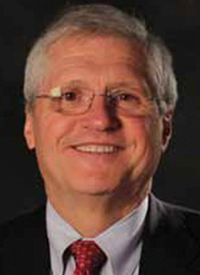Article
Future of Lung Cancer Treatment Looks Bright With Emerging Technologies, Novel Discoveries
Author(s):
Mark G. Kris, MD, discusses recent progress in non–small cell lung cancer and small cell lung cancer, efforts being made to address unmet needs in these paradigms, and ongoing research that is generating excitement.
Mark G. Kris, MD

To continue to move the needle forward in lung cancer treatment, efforts are being made to develop novel strategies for those who progress on targeted therapies, and for those who have low mutational burden or PD-L1 expression and do not derive optimal benefit from immunotherapeutics, according to Mark G. Kris, MD. Moreover, emerging technologies are allowing for earlier disease detection and stronger insight into treatment response, which is a critical in informing next steps in the treatment journey for patients.
“Emerging technologies utilize the DNA in the bloodstream to detect the presence or absence of a cancer with great sensitivity, and advances made in the realm of pathology utilize artificial intelligence techniques to evaluate the effect of [different] treatments on a patient’s cancer,” Kris said. “These emerging technologies are going to change the treatment [paradigm]. They are here now, and they will only accelerate in their use and their significance.”
In an interview with OncLive® during the 16th Annual New York Lung Cancers Symposium®, hosted by Physicians’ Education Resource® (PER®), LLC., Kris, medical oncologist, William and Joy Ruane Chair in Thoracic Oncology, Memorial Sloan Kettering Cancer Center, discussed recent progress in non–small cell lung cancer and small cell lung cancer (SCLC), efforts being made to address unmet needs in these paradigms, and ongoing research that is generating excitement.
OncLive®: How has lung cancer treatment shifted in recent years?
Kris: The success in lung cancer treatment has expanded rapidly, particularly in the past few years. Drug after drug has been approved for patients with this disease. A recent study looked at the mortality of lung cancer, and for the first time ever, the mortality in patients with advanced [disease] had decreased. The paper specifically stated that this was because of successful treatments. The field is changing quickly and dramatically, and it is changing for the better [in that] patients [can now] live longer and [derive] more benefits from [available] therapies.
What are some of the efforts being made to address unmet needs in this field?
Despite all the success [that we have seen], many groups of patients still do not achieve the desired result. The biggest remaining question [has to do with] the patients on targeted therapies. Eventually, these therapies fail patients. As such, we must come up with strategies to have either improved targeted agents or different ways to treat [these patients] at the time of failure.
The success of immunotherapeutics is greatest in patients with evidence of expression of various substances on the cell surface, such as PD-L1 or tumor mutation burden. However, patients who have low mutation burden and very low PD-L1 expression derive much less benefit. Better strategies are needed for [these patients].
Moreover, in SCLC, although some strides have been made by adding immunotherapeutics [into the mix,] outcomes [are still not where we want them] to be. Patients barely hit a survival benefit of 1 year; we want to do much better than that in this population.
What is some of the work that is being done with the Lung Cancer Mutation Consortium?
I am a [member] of the Lung Cancer Mutation Consortium, and we are trying to change the way that patients who are surgical candidates are being treated. It is currently not a standard of care to check patients with comprehensive next-generation sequencing, as done with [patients who have] stage 4 [disease] by either blood or tissue. We're trying to change that.
Currently, a 1000-patient trial [is being conducted] to ensure that patients [are tested] at the time of diagnosis, prior to surgery. [We want to] take whatever molecular characteristics their tumors have and try to leverage [that knowledge to inform] better treatments [decisions] for patients—even those who are candidates for surgery.
Where should future efforts be focused?
Based on successes observed in recent years, the future in lung cancer is very bright. Although we continue to look for new breakthrough discoveries, we are going to be able to take the [tools and knowledge] that we have today and apply them to more patients. For example, the benefits of immunotherapeutics in patients with advanced cancer has just recently been applied to those with locally advanced cancer. This means, we can take something we have [for one subgroup] and [apply it] to another group of patients. Moreover, we will improve in selecting patients and assessing responses.








